Suzuki Motorcycles
Suzuki Motorcycles has etched its name in the annals of automotive history as a brand synonymous with innovation, reliability, and performance. From its origins as a post-war necessity in Japan to becoming a global powerhouse in the motorcycle industry, Suzuki’s journey is a tale of relentless pursuit of excellence. This article delves into the rich history, iconic models, and the brand’s influence on the global motorcycle landscape.
Suzuki Motorcycles: A Humble Beginning
The Birth of Suzuki Motorcycles
Suzuki’s foray into the motorcycle industry began in 1952 with a simple yet groundbreaking invention—a bicycle fitted with a 36cc two-stroke engine. This modest innovation, driven by necessity in post-war Japan, marked the beginning of what would become a legacy in the motorcycle world. The engine powered the rear wheel via a belt drive, offering an affordable and practical solution for a nation rebuilding itself. This early model, though basic, laid the foundation for Suzuki’s commitment to performance and reliability.
The Evolution of Early Models
Suzuki’s initial success with its motorized bicycle prompted the company to explore more powerful and sophisticated designs. By 1955, Suzuki had introduced its first “real” motorcycle, a 100cc two-stroke machine featuring a two-speed transmission and telescopic front forks. The inclusion of plunger rear suspension as an optional extra reflected Suzuki’s early recognition of the need for comfort and handling, elements that would become hallmarks of their future models.
The following years saw rapid advancements. In 1956, a 125cc model emerged, offering improved performance and design. By 1957, Suzuki had developed a 250cc two-stroke single, showcasing their engineering prowess. These early models were crucial in establishing Suzuki’s reputation for building motorcycles that balanced performance, durability, and affordability.
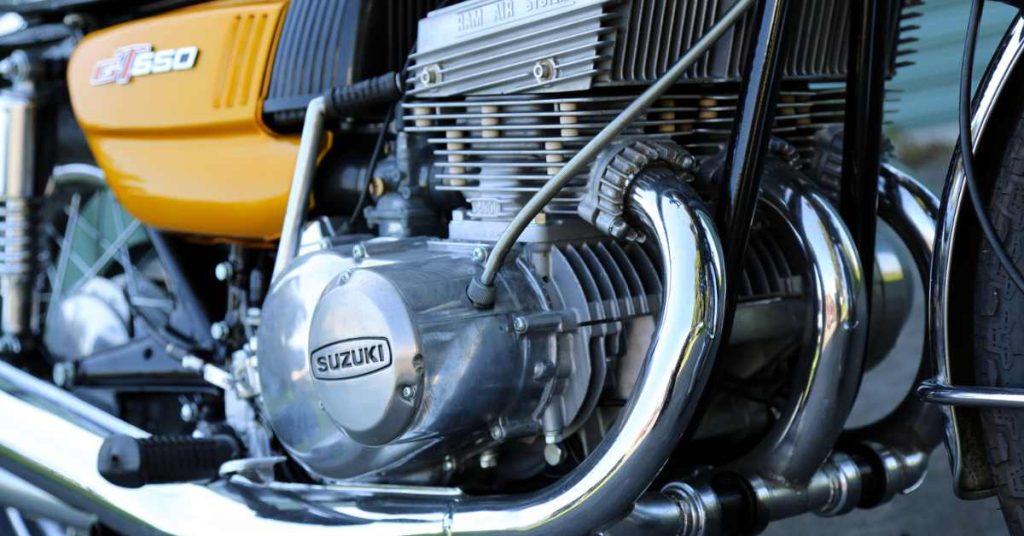
The International Debut: Suzuki Motorcycles in the West
Suzuki’s Entry into the Global Market
Suzuki’s ambitions were not confined to Japan. In 1960, the brand made its first significant foray into the Western market by entering the prestigious Isle of Man TT races. While records did not tumble that year, the presence of Suzuki motorcycles on the global stage was a statement of intent. It signaled the beginning of a journey that would see Suzuki become a dominant force in the international motorcycle arena.
Exports to Europe began in earnest in 1961, followed by an expansion into the United States in 1962. These markets received a range of models from 50cc mopeds to 250cc machines, catering to a diverse audience with varying needs. Suzuki’s ability to offer reliable, performance-oriented motorcycles at competitive prices made them an attractive option for riders worldwide.
Racing Success and Technological Advancements
Suzuki’s commitment to racing played a pivotal role in its global success. The brand’s breakthrough came in 1961 when they secured the services of East German rider Ernst Degner, who defected to the West, bringing with him valuable two-stroke tuning secrets from MZ. This collaboration bore fruit as Suzuki quickly rose to prominence in the world of Grand Prix racing.
By the end of the 1960s, Suzuki had claimed seven 50cc and 125cc World Championships, solidifying their reputation as a formidable racing team. This success on the track translated into technological advancements in their production models, as Suzuki continually pushed the boundaries of performance, particularly in the two-stroke engine segment.
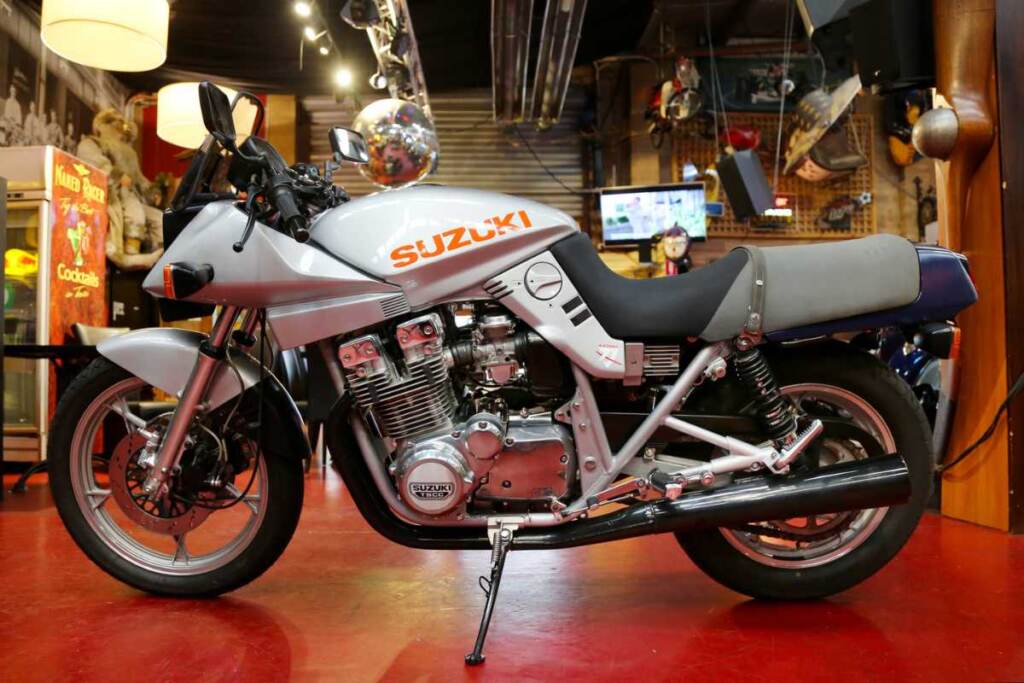
The Rise of Iconic Suzuki Models
The X-6 Hustler: A Western Favorite
1965 marked a significant milestone for Suzuki with the launch of the X-6 Hustler. This 250cc two-stroke parallel twin was a game-changer, featuring a six-speed gearbox and an automatic lubrication system. Designed primarily for the Western market, the X-6 Hustler’s blend of power, agility, and user-friendly features made it an instant hit among riders. It was a clear indication that Suzuki was not just following trends but setting them.
The Motocross Pioneers
Suzuki’s innovation was not limited to road bikes. In 1967, they became the first Japanese manufacturer to build serious motocross machines. This move into off-road racing underscored Suzuki’s versatility and their ability to compete across various motorcycle disciplines. The brand’s dedication to motocross paid off handsomely, as they secured their first motocross World Championship just three years later in 1970.
The GT750 and the Advent of Big Bikes
As the 1970s dawned, the motorcycle industry began to see a shift towards larger, more powerful machines. Suzuki’s answer to this trend was the GT750, introduced in 1971. Dubbed “The Water Buffalo” by enthusiasts due to its liquid cooling system, the GT750 was Suzuki’s first attempt to break into the big bike market. It featured a 750cc three-cylinder two-stroke engine, which was a bold departure from the smaller-capacity models that had previously dominated their lineup.
The GT750, alongside its smaller siblings—the 380cc and 550cc triples—cemented Suzuki’s reputation as a manufacturer capable of producing large, performance-oriented motorcycles. The success of the GT750 on the racetrack, particularly in endurance events, further enhanced Suzuki’s standing in the global motorcycle community.
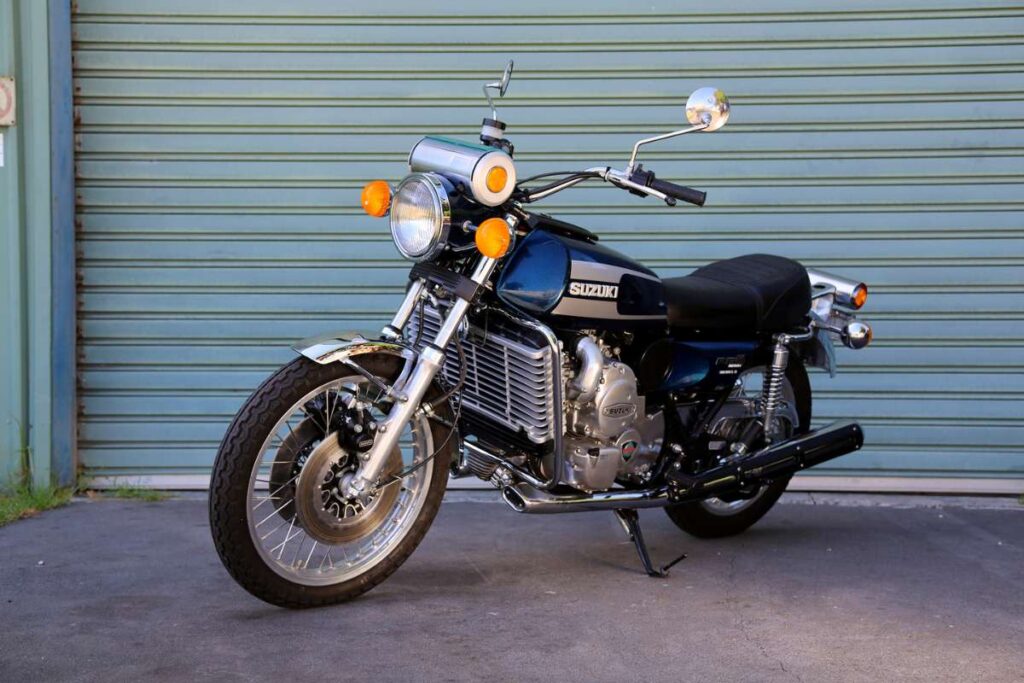
The Advent of Four-Stroke Technology
The GS Series: Suzuki’s First Four-Strokes
The mid-1970s saw Suzuki diversify its portfolio with the introduction of four-stroke engines. The GS series, launched in 1976, marked Suzuki’s entry into the four-stroke market. The GS750, a double overhead-camshaft four-cylinder machine, drew inspiration from Kawasaki’s designs but quickly established its own identity. The GS series expanded to include a 398cc twin and a 997cc four-cylinder model, catering to a wide range of riders.
Suzuki’s adoption of a four-valves-per-cylinder layout in 1979 further enhanced the performance and efficiency of their four-stroke engines. This innovation allowed Suzuki to compete head-to-head with other Japanese manufacturers who had already made significant inroads into the four-stroke market.
The GSX-R Series: A New Era of Sportbikes
The mid-1980s brought about a revolution in sportbikes with the introduction of the GSX-R series. The GSX-R750, launched in 1985, was a groundbreaking model that redefined what a sportbike could be. Featuring an oil-cooled, alloy-framed design, the GSX-R750 was the first of a new breed of race replicas that blurred the lines between track and street motorcycles.
The GSX-R series expanded rapidly, with models ranging from 250cc to 1100cc, each embodying Suzuki’s commitment to performance and cutting-edge technology. The addition of water cooling in 1991 further enhanced the GSX-R’s capabilities, making it a favorite among sportbike enthusiasts.
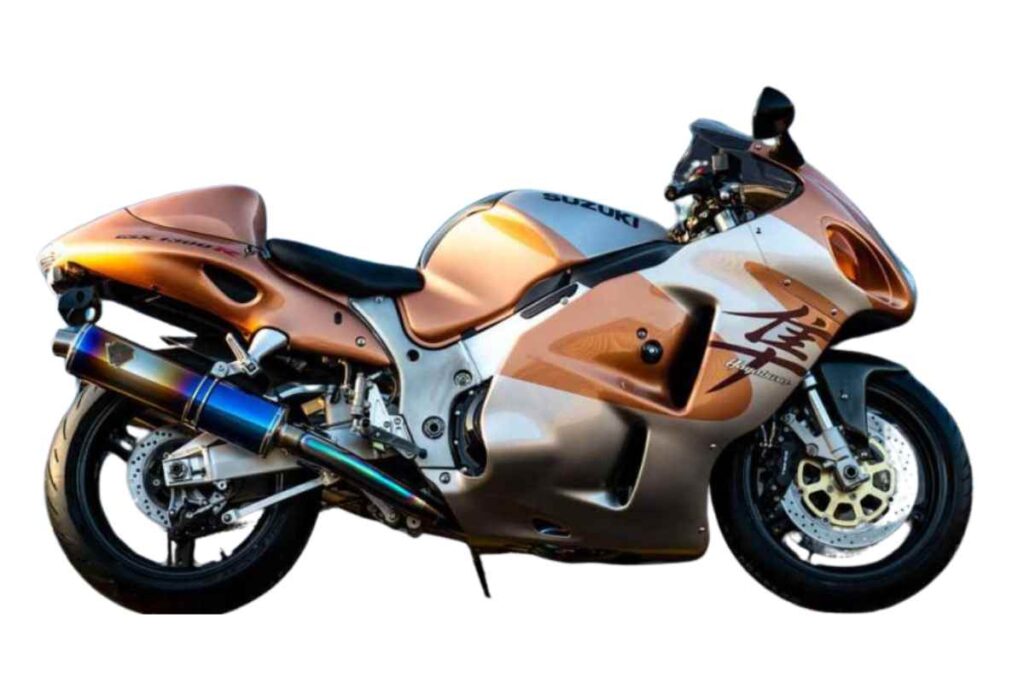
The Hayabusa Era: Breaking Records and Molds
The GSX-1300R Hayabusa: A Speed Icon
In 1999, Suzuki once again pushed the boundaries of motorcycle engineering with the introduction of the GSX-1300R Hayabusa. Named after the Japanese peregrine falcon, known for its incredible speed, the Hayabusa lived up to its name by becoming the fastest production motorcycle in the world at the time. Its aerodynamic design, combined with a 1,298cc liquid-cooled inline-four engine, allowed it to achieve speeds that were previously unheard of in a production motorcycle.
The Hayabusa’s influence extended beyond its top speed. It set new standards for motorcycle design, blending power, stability, and handling in a way that few could match. Even as competition in the hyperbike segment intensified, the Hayabusa remained a benchmark for speed and performance.
The GSX-R1000: The Ultimate Sportsbike
Following the success of the Hayabusa, Suzuki continued to innovate with the GSX-R series. The GSX-R1000, introduced in 2001, was based on the GSX-R750 but took performance to new heights. With its liquid-cooled, 16-valve, four-cylinder engine, the GSX-R1000 quickly earned a reputation as the “ultimate sports bike.” It combined lightweight construction with a powerful engine, making it a formidable competitor on both the track and the street.
The GSX-R1000’s impact was immediate and profound, influencing the design and engineering of sportbikes for years to come. It embodied the essence of Suzuki’s philosophy: to create motorcycles that deliver exhilarating performance without compromising on reliability or rider experience.
The Modern Era of Suzuki Motorcycles
Innovations in the 2000s
The 2000s saw Suzuki continue to push the envelope with models that featured cutting-edge technology. In 2008, Suzuki introduced the RM-Z450, the world’s first production fuel-injected motocross bike. This innovation marked a significant advancement in off-road motorcycle technology, providing riders with more consistent power delivery and better throttle response.
Suzuki also made strides in the adventure touring segment with the V-Strom series, offering versatile and capable motorcycles that catered to a growing market of riders seeking adventure on and off the road. The V-Strom 1000
ABS, introduced in 2014, was the first Suzuki motorcycle to feature a traction control system, highlighting the brand’s commitment to rider safety and technological advancement.
The Return of the GSX-R1000 and the KATANA
In 2016, Suzuki reintroduced the GSX-R1000, which launched in 2017 with significant redesigns, solidifying its status as the flagship model for the brand. The new GSX-R1000 featured advancements such as a variable valve timing system, improved aerodynamics, and enhanced electronics, ensuring it remained at the forefront of the sportbike market.
Suzuki also paid homage to its heritage with the 2018 unveiling of the all-new KATANA, a modern interpretation of the iconic 1980s model. The new KATANA blended retro styling with contemporary technology, appealing to both nostalgic riders and a new generation of motorcyclists.
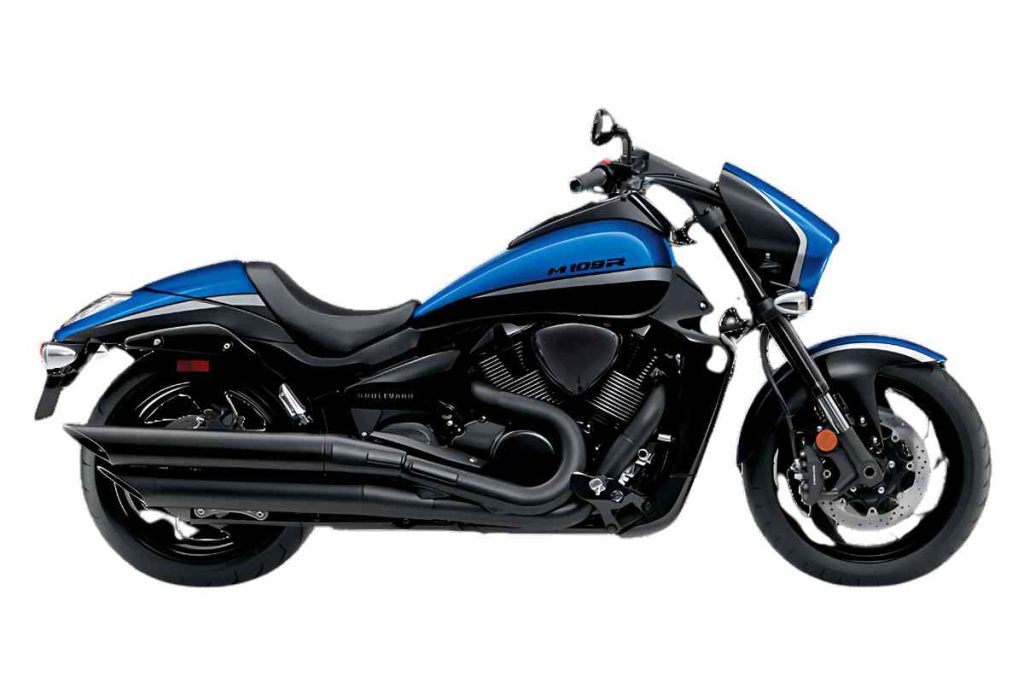
Suzuki Motorcycles Today: The 2024 Lineup
The Latest Innovations and Models
As of 2024, Suzuki’s motorcycle lineup continues to reflect its commitment to innovation, performance, and rider satisfaction. The Hayabusa Gen III remains a flagship model, showcasing the latest in Suzuki’s engineering capabilities. With refined aerodynamics, improved engine performance, and cutting-edge electronics, the Hayabusa Gen III is the ultimate expression of Suzuki’s pursuit of speed and precision.
The GSX-R1000R and GSX-R1000 continue to dominate the sportbike segment, offering unparalleled performance and handling. Meanwhile, the GSX-8R and GSX-S1000GX cater to riders seeking a blend of performance and versatility.
Adventure and Touring: The V-Strom Series
Suzuki’s V-Strom series remains a favorite among adventure and touring enthusiasts. The 2024 lineup includes the V-STROM 1050DE, V-STROM 1050, V-STROM 800DE, and V-STROM 800, each designed to provide a perfect balance of power, comfort, and off-road capability. The V-STROM 650XT and V-STROM 250SX offer options for riders seeking smaller, more accessible adventure bikes without sacrificing performance.
Street and Sport: The Diverse Offerings
Suzuki’s street and sport models, including the GSX-S1000, KATANA, and SV650, continue to attract riders with their blend of style, performance, and practicality. The GIXXER SF 250 and AVENIS 125 cater to those seeking a sporty ride in a more compact and affordable package, making Suzuki motorcycles accessible to a wide range of riders.
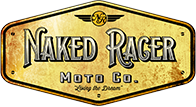




No comment